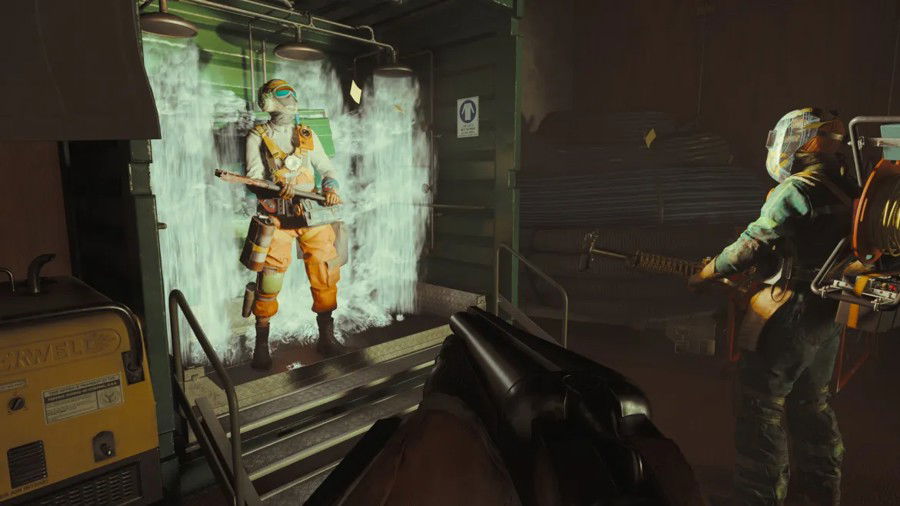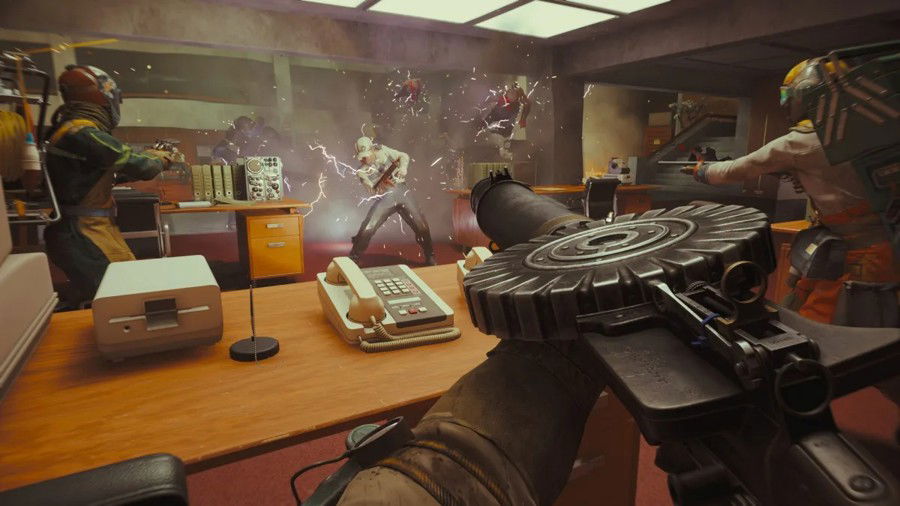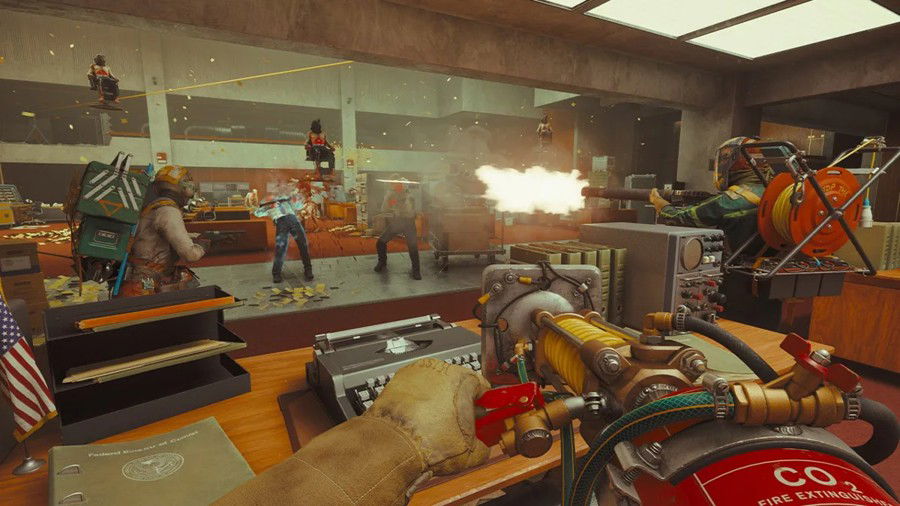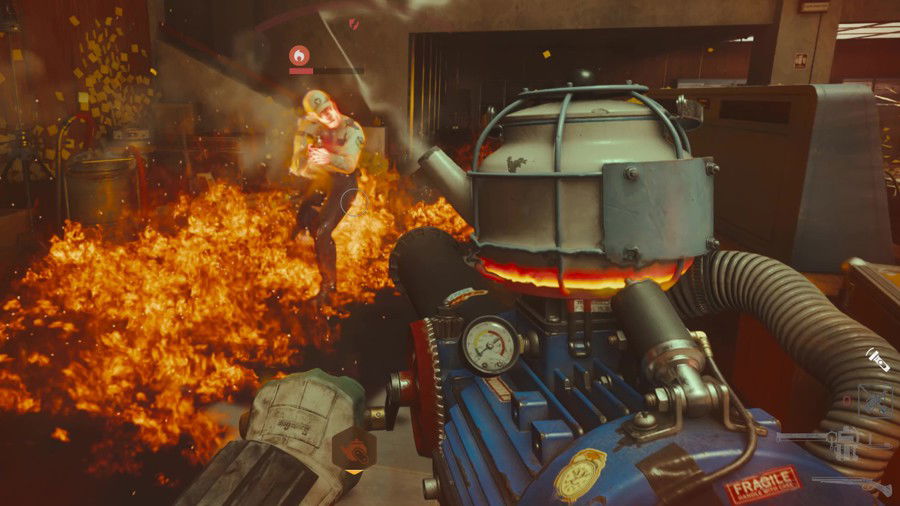The Control Universe Comes to Co-op
FBC: Firebreak is a return to the Control universe, transporting players back to the Old House, headquarters of the Federal Bureau of Control (FBC). This time, the perspective changes, instead of a powerful protagonist like Jesse Faden, we embody volunteers, employees turned field agents, facing an endless supernatural crisis. Developed by Remedy Entertainment, this cooperative spin-off promises combinations, tactical creativity and the aesthetics that made the franchise famous. In this review, we'll see if this formula can withstand the heat of co-op combat.
Premise and Context: The Endless Siege
Set six years after the events of Control, the game finds the Old House still under siege by Hiss forces, with sealed exits and scarce resources. The premise is simple: paranormal entities have escaped, security protocols have failed. Players join the Firebreak unit, a crisis response team made up of desperate volunteers (secretaries, managers, rangers) who use improvised weapons and altered tools to contain the anomalies.
Surrounding this tension is the need to maintain order at any cost, even if it means sacrificing innocents or destroying entire wings of the facility. The game focuses on immediate action rather than plot. For fans of Control, it's an expansion of the universe; for newcomers, it's a different entry point, but one that could work well.

Fragmented and Engaging Narrative
Firebreak doesn’t deliver its story linearly. Like Control, much of the plot is uncovered through documents, audios, and records scattered throughout the facility.
Themes range from institutional power, loss of identity, and the clash between science and the unexplained. In many missions, difficult moral choices arise: should you save a civilian unit that may be contaminated or follow orders? Should you investigate a strange phenomenon or destroy it before it contaminates the neighboring wing?
These decisions shape the narrative, the course of the missions, and the team's morale. It’s possible to finish the game with a strong squad or with traumatized survivors questioning their own actions.
Visuals and Design: The Style of the Unexplainable
Aesthetically, FBC: Firebreak has a visual style that mixes brutalist architecture with cold palettes and lighting effects that simulate visual interference. The design of the FBC facilities takes us to a supernatural place where concrete is more reliable than the laws of physics.
The game's artwork is minimalist, but very impactful. Each corridor, monitoring room or containment wing seems to have its own story, as if something had happened there and these details are often told only by the environmental storytelling such as blood in geometric patterns, messages scrawled on the walls, or cameras that silently follow the agents.
The interface is clean and works very well, with an aesthetic that reinforces the atmosphere of constant surveillance. The menus resemble secret files of a government organization (this part reminded me a lot of the X-Files series), with folders, labels and alphanumeric codes, everything reminds us of the suffocating bureaucracy of the FBC.

Sound and Atmosphere: The Terror of Silence
The sound design is impeccable, the game knows how to use silence masterfully. Moments of great calm are broken by distant noises, static on radios, muffled screams or inexplicable sounds coming from sealed rooms. The soundtrack is almost non-existent in many moments, replaced by ambient noises that increase the tension (playing with headphones will greatly increase your immersion).
When music enters the scene, it’s always to emphasize a moment of real danger, an intense combat, a threat that has been released or the loss of an agent. The audio conveys a feeling of constant paranoia.
Gameplay: Cooperative Chaos with Creative Crises
FBC: Firebreak can be described as a fusion between XCOM, Door Kickers and Desperados III, with a supernatural twist. Commanding a small unit through real-time maps with tactical pauses. It’s possible to plan routes, use special abilities, coordinate synchronized entrances into rooms and interact with various elements of the environment. The difference is the focus on indoor and closed environments, which requires constant attention to traps, electronic devices and locked doors.
The enemy AI is very competent and unpredictable. Paranormal entities, contaminated soldiers and other threats force the player to rethink their strategies. A simple positioning error can cost an agent's life or, worse, the spread of an uncontrollable anomaly.
The highlight is the fire and destruction propagation system, which gives the game its name. Fires spread quickly, reacting to objects, materials and even airflows. The player will need to think about how to eliminate a threat and how to contain collateral damage.
In addition, the game forces us to manage resources and consequences. Agents can suffer psychological trauma, develop mental conditions over time, and even turn against the team. Decisions made in one mission can have a direct impact on the next, creating a sense of continuity and weight that I rarely see in games of this genre.

Missions and Objectives
The central idea of Firebreak lies in its "Jobsites", missions that can be repeated with varied objectives, from destroying 15,000 paranormal post-its to deactivating radioactive furnaces. Each mission is divided into three Clearance Levels, which increase in complexity and duration:
- Level 1: Short missions (<5 minutes), focused on mechanical tasks (e.g. repairing generators).
- Level 2: Medium length (10 minutes), with more combat.
- Level 3: Full experience (25-40 minutes), including bosses and rule-altering "Corruption" effects (e.g. reduced gravity, superfast enemies).
Combat and Enemies: Creativity with Contrast
Combat against the Hiss ranges from possessed employees to absurd anomalies (e.g. a boss made of post-it notes named "Sticky Ricky"). Enemy variety is limited, but the bizarre designs make up for this shortcoming. Evil barrels, flying battery kits, and floating "office ghosts" steal the show.
Conventional weapons are the game's problem; shotguns and rifles pack a punch, but SMGs and assault rifles are dull and require expensive upgrades to become viable and exciting. The depth of combat comes from elemental combinations, which include extinguishing flames with water and then electrocuting puddles to create lethal traps, a system that greatly rewards creativity.
Multiplayer and Durability
With only five Jobsites at launch, gameplay repetition is a big issue. Level 1-2 missions quickly become monotonous, and the highlight of each map (Level 3) is great, but it goes by quickly. The addition of Corruption modifiers (e.g. a drum that speeds up enemies) helps, but they’re only available at Level 3.
Still, good co-op moments come when communication flows well. Reviving an ally under fire, combining abilities to create a lava storm, or escaping an elevator under attack all make for impactful moments that can bring memes among friends.

Progression and Customization: Grind and Bureaucracy
Progression in Firebreak is based on Lost Assets, a currency earned by completing tasks and recovering "lost documents". Unfortunately, the system suffers from overkill:
- Requisitions Menu: Unlocks weapons, perks, and augmentations via collected pages (battle pass style).
- Interactive Upgrades: Weapons and perks require multiple levels of investment.
- Artificial Lock: Kits start out incomplete. Essential tools like the BOOMbox (Jump Kit) need to be unlocked.
The result is a slow learning curve, with simple and boring initial missions, something that can make casual players want to abandon the game before accessing high-level content (like the Functional Submachine Gun).

Challenges and Limitations
Despite its merits, FBC: Firebreak is still not perfect. The learning curve is very steep, with almost no tutorials, which is a hindrance, as we learn through trial and error. New players will feel lost in the first few hours (it took me a long time to understand the game's logic), especially with so many interconnected mechanics.
In addition, the tactical pause system, although good and powerful, becomes confusing in faster missions with frenetic action. When several threats are moving and fires are spreading, management is difficult and leaves the player stressed.
The repetition of environments, although consistent with FBC's architectural proposal, can tire the eyes after many game sessions. What saves here is the diversity of situations and threats that compensate in this aspect.

Pros and Cons
Pros
- The setting is immersive, the elemental combat is creative, and the cooperative moments are epic.
- Control fans who are eager to explore the Old House from a new perspective.
- Groups looking for a Left 4 Dead with a bureaucratic-absurd flavor.
- Game Pass/PS Plus players (available day-one).
Cons
- Progression is slow, weapons are very unbalanced, Jobsites are repetitive, and the tone of the game is inconsistent with Control.
- There’s no viable single-player mode.
- Those looking for a deep narrative: The focus is on action, not story.
- Casual players: The initial grind may be off-putting.

Conclusion: Control is an Illusion
FBC: Firebreak is a great game in the current tactical game scene. Its premise is excellent, the atmosphere and creative mechanics offer an intense experience for those who enjoy planning, challenge and a good supernatural mystery.
It’s not an easy game, and it’s not made for everyone, perhaps that’s precisely what makes it special. If you’re looking for a game that challenges your strategic skills while experiencing a disturbing sci-fi story, FBC: Firebreak should be at the top of your list. It offers chaotic fun for groups who want to overcome the learning curve.
Although it lacks polish in progression and variety, Remedy has promised evolution, especially with two additional Jobsites announced for 2025. Perhaps with these and other updates, the game could become an essential for co-op games.














— Kommentare 0
, Reaktionen 1
Sei der erste der kommentiert